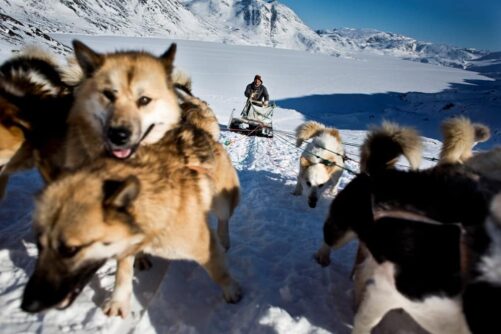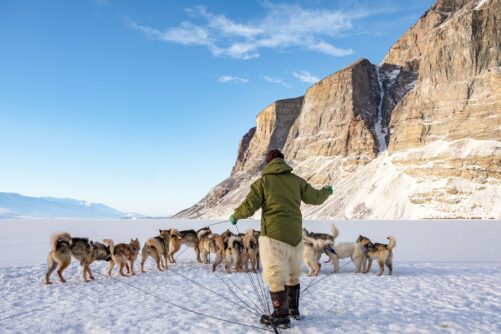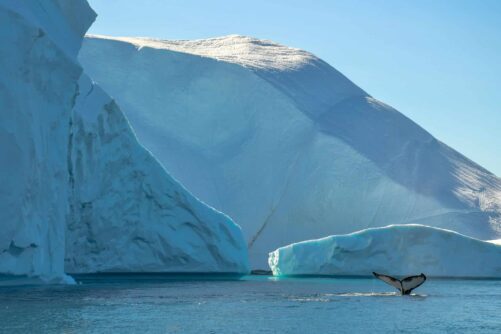

7 key facts about sled dogs in Greenland
Published: 17/06/2020
Reading time: 8 minutes
Greenland contains the largest population of sled dogs (huskies) in the Arctic and is unique in maintaining its traditional dog sledding culture. Read on to discover 7 key facts about this remarkable animal and its importance to the Greenlandic people.
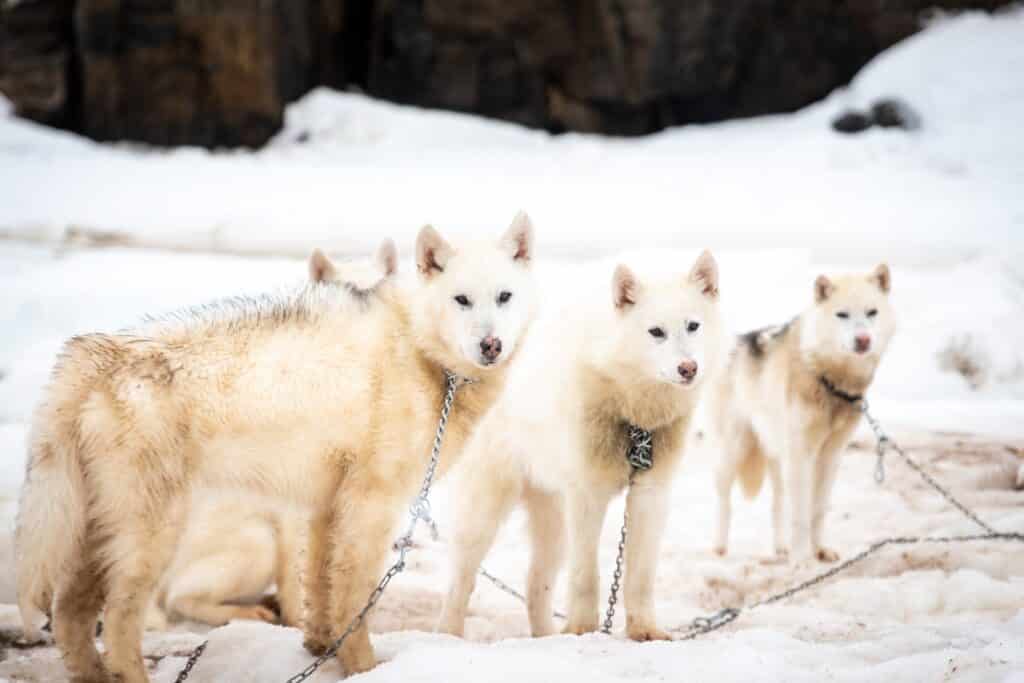
The Greenlandic Sled Dog (a type of husky) is a national icon and an important part of the Greenlandic identity. Bought to the island almost 5,000 years ago, they were instrumental in enabling the Inuit to explore and survive in the harsh Arctic environment and continue to play an important role in the daily life of many Greenlanders.
1. Where are sled dogs found in Greenland?
Greenlandic sled dogs can only be found North of the Arctic Circle and on the East Coast. It is prohibited to bring another breed of dog into these areas and if a Greenlandic sled dog leaves this restricted zone, it is not allowed to return.
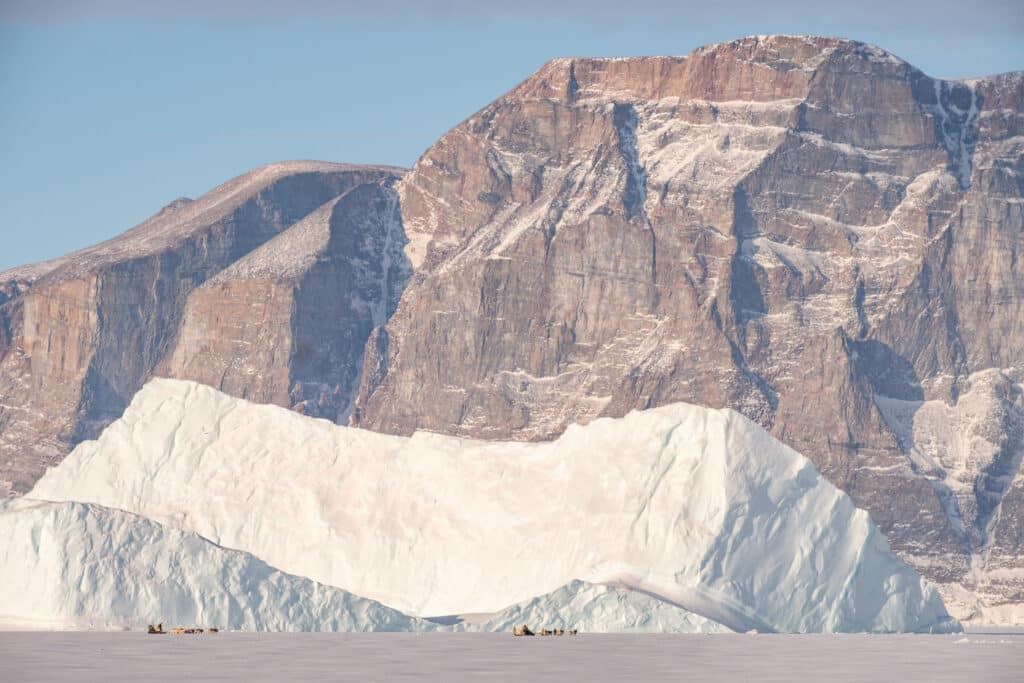
The reasons for this are:
- the lack of sea ice South of the Arctic Circle during winter. This makes traditional forms of hunting – especially those that use sled dogs – almost impossible
- the desire to keep the Greenlandic sled dog race pure and disease-free. By limiting the range of the Greenlandic dog, sheep farmers in South Greenland are able to use border collies and other breeds more suited to working with animals, and many Greenlanders are able to keep other types of dogs as pets.
The only exception to this rule is in Kangerlussuaq, which lies very close to, but just South of the Arctic Circle.
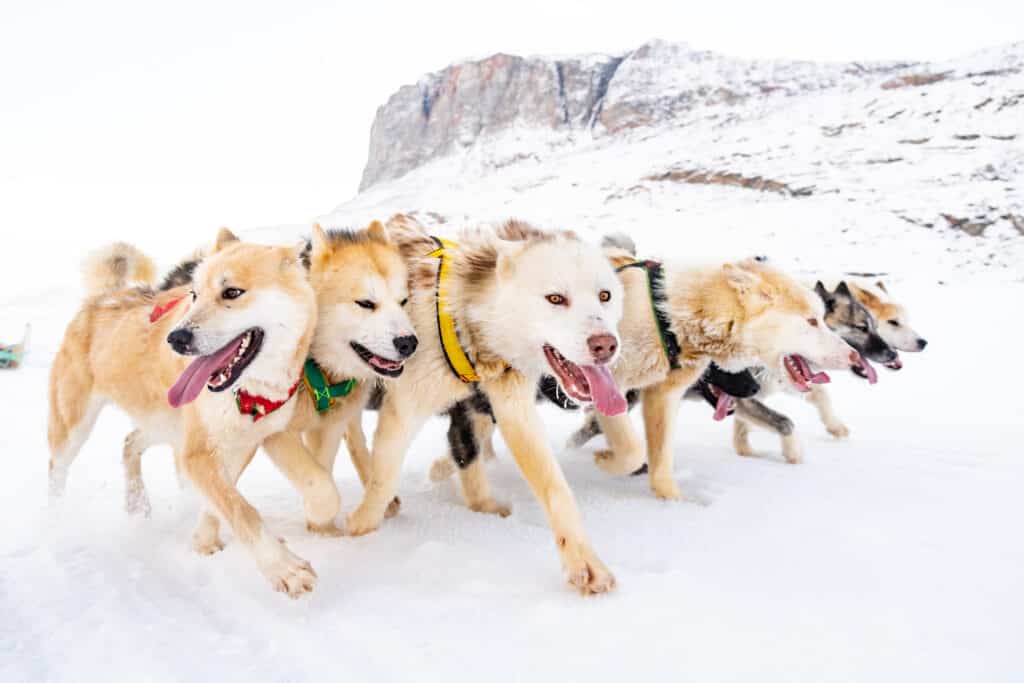
2. How many sled dogs are there in Greenland?
There are now about 15,000 sled dogs in Greenland.
While this might sound like a lot (after all, the human population of Greenland is only 56,000), it is almost half the number that existed just 20 years ago. This is partially due to:
- climate change. The lack of sea ice (particularly South of the Arctic Circle) means that hunters and fishermen can no longer use dogsleds. They now use boats – even during Winter.
- the higher costs of keeping dogs compared to a boat or snowmobile. Dogs must be raised, fed and tended to all year round, while boats and snowmobiles only require fuel and a small amount of maintenance. The cost of dog food has also increased in Greenland, and catching enough meat to feed a team of dogs requires a significant amount of time.
The result is a very uncertain future for this unique breed, but one that is acknowledged and taken very seriously in Greenland.
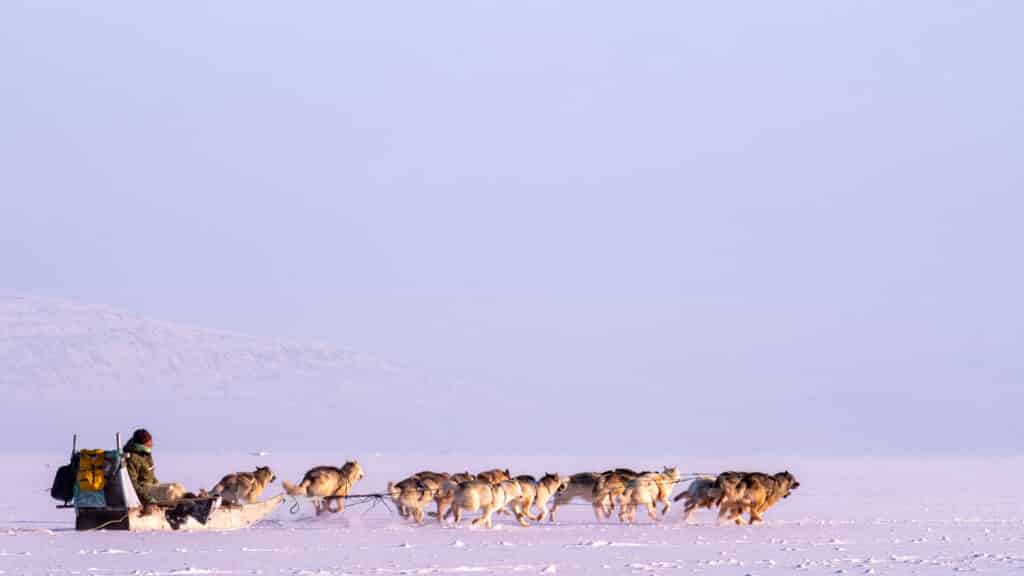
Interesting snippet: The University of Greenland, the Natural History Museum of Denmark and the University of Copenhagen embarked on a large project to research the Greenlandic sled dog. Their aim was to create, encourage and sustain pride in the sled dog culture in Greenland and to help preserve this traditional heritage. The project is called QIMMEQ, which means “dog” in the Greenlandic Language.
3. Why are Greenlandic sled dogs so special?
The Greenlandic sled dog is a very specific breed of husky found nowhere else in the world. Like all other kinds of sled dogs, they have been bred for stamina, hardiness, and intelligence under Arctic conditions (for example, they are very good at reading ice conditions), and over the millennia of working with humans, they have developed a special relationship with us. Watching a trained musher (dog sled driver) negotiate obstacles with the team is a highlight of any visit to the Arctic.

Sled dogs are also the only animal that can outrun a human over long distances, and they can continue to do so for a very long time. Click to watch this short video that explains how they are able to keep running, day after day, while we need to rest after a long journey.
4. What commands are used to control the dogs?
In Greenland, mushers generally use the words IJU to instruct the dogs to go left and ILI for them to go right. But this isn’t universal. It simply depends on what words the musher uses to train the dogs.
Mushers also use a dogsled whip as a guiding tool, never for punishment. The musher cracks the whip in such a way that the dogs run away from the sound. ie. if the dogs should go left, the musher cracks the whip to the right, and visa versa. This is sometimes much more effective than voice commands.
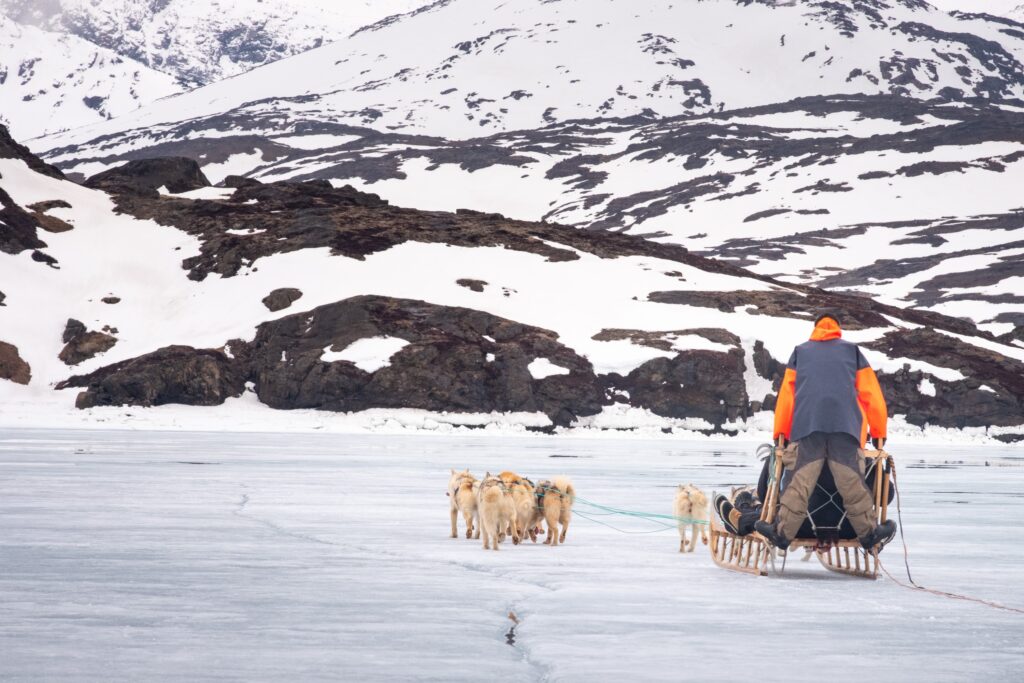
Fun story: A renowned dogsled racer who taught his dogs the words in reverse – ILI for left and IJU for right. He was apparently able to influence the other dogsled teams he was racing against to go the wrong way!
5. Dog sled racing is a national sport
Every year there is a national competition for dog sled racing called Avannaata Qimussersua. It is held in a different town each year, and because the distances between the towns are so large and there are no roads in Greenland, the teams of sled dogs are often flown in with a big Sikorsky helicopter.
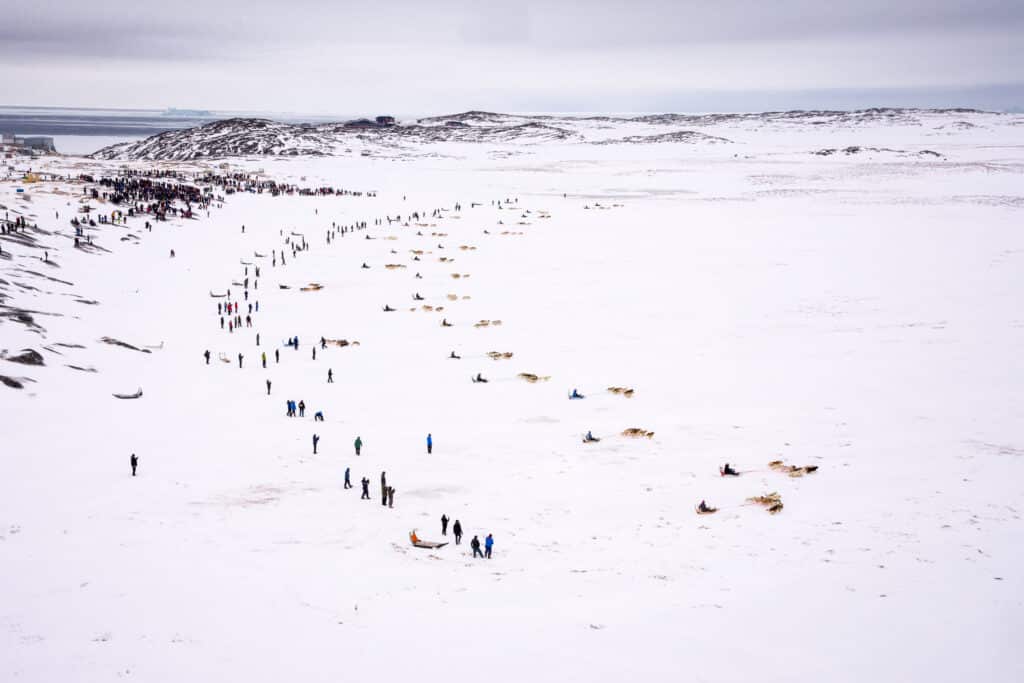
Click to watch a short documentary about the sport from the QIMMEQ project where a 13-year old newcomer dreams of winning the championship, encouraged by veteran race legend Ville Siegstad.
Interesting snippet: The Greenlandic sled dog was never bred for racing. It was bred to hunt polar bears and pull heavy sleds on a long hunt. For this reason, when racing against other sled dog breeds, it often doesn’t do well.
6. Should I go on a dog sled tour in Greenland?
Yes! Dog sledding is a way of life in Greenland and an important part of the cultural heritage. By going on a dog sledding tour, you will help to keep this tradition alive and supplement the income of the musher who finds it more and more difficult to maintain the dogs.
The dogs themselves are bred to run and relish the opportunity to pull. They are not whipped or harmed in any way (the dogsled whip is struck beside the pack, not on it) and it is the best way to experience the silence of the Arctic winter in an authentic way.
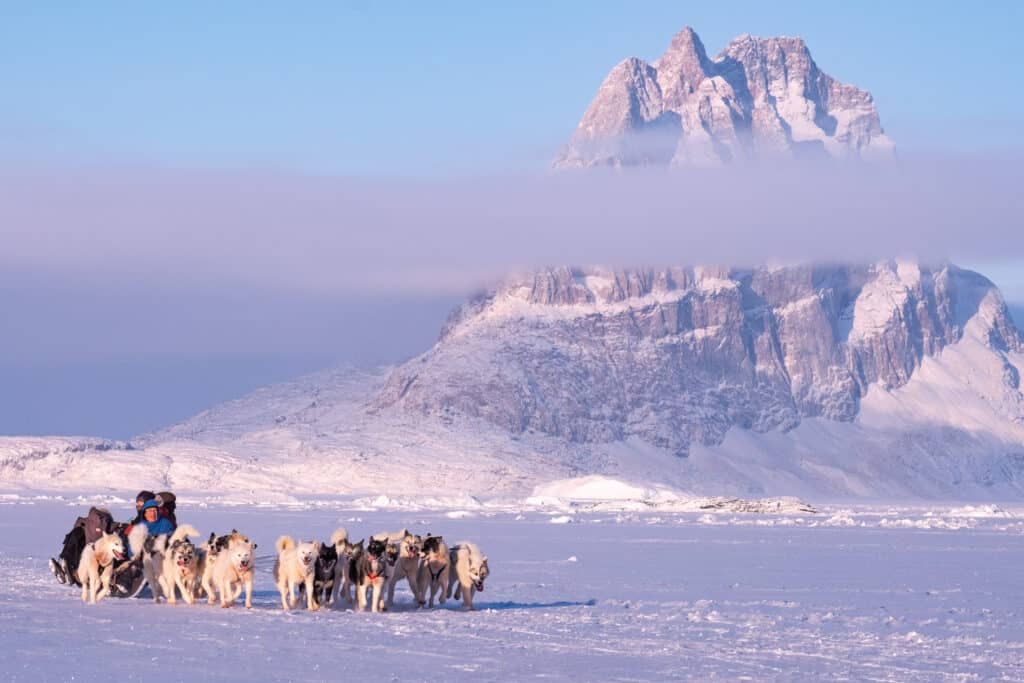
Important fact: You must never approach a Greenlandic sled dog unless given permission by the owner. Although dogs older than 6 months must be chained by law, puppies are allowed to roam freely. If they approach you or follow you, that is fine. But keep your distance from the adult dogs.
7. Can I go dogsledding during the Summer?
Yes! But, there is only one place in Greenland where you can do this – Disko Island.
High above the settlement of Qeqertarsuaq, is the Lyngmarksbræen (Lyngmark) Glacier. This is “dead glacier” that no longer moves or calves, but is a great place to find snow at any time of the year. It is a fairly steep climb to the top of the 900m tall mountain to arrive at the glacier and the hike can take anywhere between 2 and 4 hours, depending on your fitness and how many photo stops you have. But the effort is totally worth it.
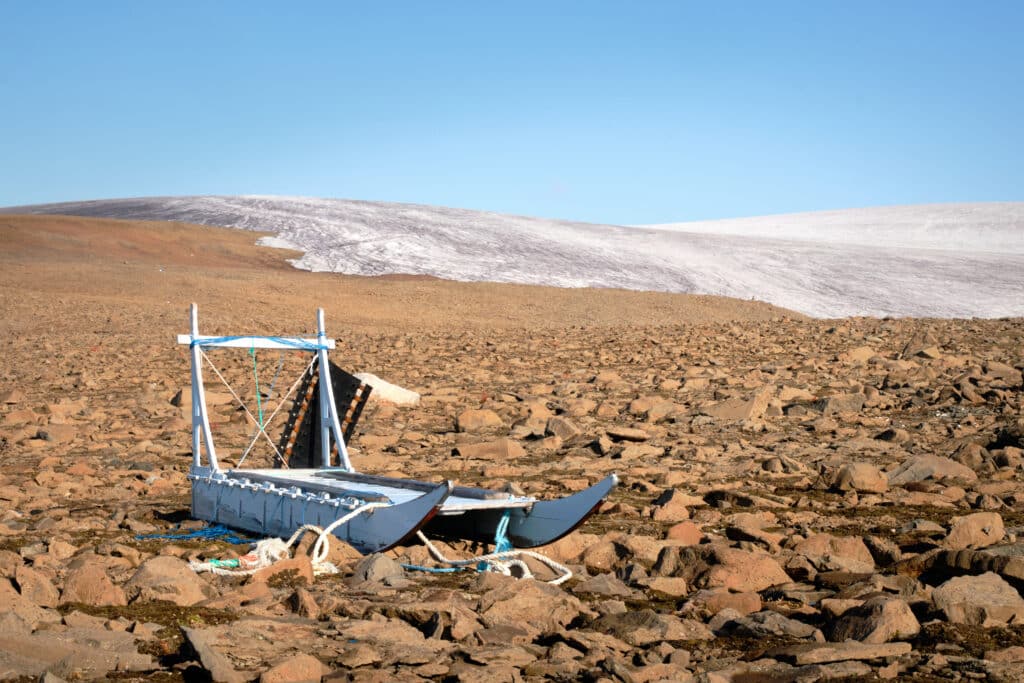
From the top, the views over Disko Bay and its enormous icebergs are incredible, and it is a unique experience to go dogsledding with a proper sled (rather than with wheels underneath) during the Summer.
There are also 2 very comfortable “huts” near the glacier, and we highly recommend staying overnight if possible.
The uncertain future for the Greenlandic sled dog
Fewer and fewer Greenlanders see dog sledding as a viable means of hunting, so less of the skills and techniques associated with this tradition are being passed down to future generations.

It has now reached a point where some prominent hunters and mushers have called for the government to embed this cornerstone of Greenlandic culture into the education of young people, and it may end up being tourists looking for an authentic Arctic experience who save the sled dog and this heritage.
Thanks to Lasse Inuk Kyed for the original article on which this is based.
Read more articles from Guide to Greenland
-
Sailing tour with Photographer!

Photo Excursion | Disko Bay and Uummannaq | 8 days | Guide to Greenland
Tour startsIlulissatDuration8 daysFrom 58500 DKKSee more -

Whale & Musk Ox Safari by boat | Uummannaq | North Greenland
Tour startsUummannaqDuration8 hoursFrom 4300 DKKSee more -
4.00(1)

City Walk | Nuuk
Tour startsNuukDuration2 hoursFrom 1590 DKKSee more -
Flights included

Nature Adventure | South Greenland
Tour startsFrom IcelandDuration8 daysFrom 24200 DKKSee more -
5.00(2)

Discover Dogsledding | 2 hours | Sisimiut
Tour startsSisimiutDuration2 hoursFrom 1900 DKKSee more -
4.50(2)

Sightseeing In Kangerlussuaq | West Greenland
Tour startsKangerlussuaqDuration2 hoursFrom 480 DKKSee more -
5.00(1)

Evening Kayaking Among Icebergs | Ilulissat | Disko Bay
Tour startsIlulissatDuration3 hoursFrom 1250 DKKSee more -
5.00(1)

Evening sailing with chance of Northern Lights | Nuuk
Tour startsNuukDuration3 hoursFrom 950 DKKSee more -
Price for group

Experience traditional Inuit drum dancing | Tasiilaq | East Greenland
Tour startsTasiilaqDuration0.5 hoursFrom 1300 DKKSee more -

Dogsledding – 2 hours | Uummannaq | North Greenland
Tour startsUummannaqDuration2 hoursFrom 2400 DKKSee more -
5.00(12)Ideal For Cruise Guests

Private guided tour by car in the capital of Greenland | Nuuk
Tour startsNuukDuration1.5 hoursFrom 2250 DKKSee more -
5.00(2)

Afternoon Whales & Ice | Ilulissat | Disko Bay
Tour startsIlulissatDuration2.5 hoursFrom 850 DKKSee more -

Paradise Valley & Ice Cap Tour | Kangerlussuaq
Tour startsKangerlussuaqDuration70 minutesFrom 3095 DKKSee more -
New tour

Dog sledding tour to the UFO cabin | Sisimiut
Tour startsSisimiutDuration4 hoursFrom 2100 DKKSee more -
5.00(1)Pay by the Hour

Pay by the Hour Private Charter | Ilulissat | Disko Bay
Tour startsIlulissatDuration2 hoursFrom 4000 DKKSee more -
Private Charter!

Helicopter Summit Flight | Nuuk
Tour startsNuukDuration1 hourFrom 22000 DKKSee more -

Whale Safari | Uummannaq | North Greenland
Tour startsUummannaqDuration4 hoursFrom 2900 DKKSee more -

10 days of hiking through Arctic nature & villages | East Greenland
Tour startsFrom IcelandDuration10 daysFrom 35700 DKKSee more -
5.00(1)Driver included!

Snowmobile tour to small settlement | Oqaatsut | Ilulissat
Tour startsIlulissatDuration3 hoursFrom 2000 DKKSee more





